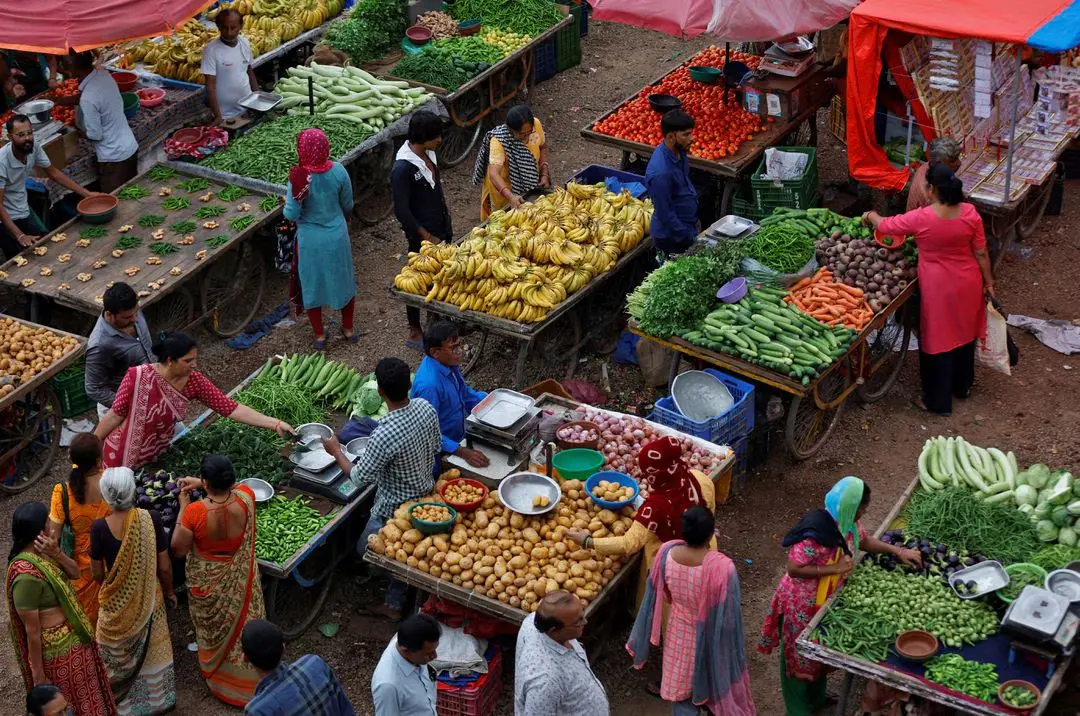
New Delhi, Oct 12 (The Street Press) – In September, the cost of everyday items in India went up more slowly than in the past three months, mainly because vegetables were not as expensive. However, it’s important to know that the central bank wants inflation to be around 4% before they make borrowing money cheaper.
The yearly retail inflation, which measures how much prices have gone up, was at 5.02%. This is lower than the 6.83% it was in the previous month. According to a survey of 66 economists by Reuters, they expected it to be around 5.50%. Back in June, retail inflation was at 4.81%.
The cost of food, which makes up almost half of what we spend on daily things, increased by 6.56% in September. This is lower than the 9.94% it went up in August.
In September, the inflation was less than what the Reserve Bank of India (RBI) considers acceptable, which is between 2% and 6%.
However, even though the inflation rate is improving, the RBI recently decided to keep the interest rates the same for the fourth time in a row. They made it clear that they want inflation to be around 4%, and being below 6% might not be enough to make borrowing money cheaper.
In the past two months, the high prices of vegetables were the main reason for keeping inflation higher. This even led the government to stop the export of rice and increase taxes on onions.
But in September, the prices of vegetables went down significantly to 3.39%, compared to a high of 26.14% in the previous month. Cereal prices also became a bit cheaper, with an inflation rate of 10.95% in September, down from 11.85% in August. It’s worth noting that India had already banned wheat exports since the previous year.
To help people with lower incomes cope with rising prices, the government increased the subsidy for cooking gas cylinders. Now, it’s 300 rupees per cylinder, up from the 200 rupees announced in August.
In a recent statement at the World Bank’s Development Committee Plenary in Morocco, Indian Finance Minister Nirmala Sitharaman mentioned that global and regional uncertainties could continue to push up inflation in the next few months. This means that the government and the RBI need to be extra careful and watchful.
The government has already taken steps in advance to control the rising prices of food, and this should help reduce the overall price pressure in the market soon, as mentioned by Finance Minister Nirmala Sitharaman.
Regarding core inflation, which doesn’t include the prices of food and energy, it’s estimated to be around 4.5%. In August, it was slightly higher, ranging from 4.6% to 4.9%, according to two economists. It’s important to note that the Indian government doesn’t officially release core inflation figures.
ONGOING CONFLICT RISKS
Oil prices have come down a bit from their peak above $95 a barrel last month, but they’re still around $85, which is relatively high. Additionally, the recent Israeli-Palestinian conflict has raised concerns about potential uncertainties in energy prices, which could impact global inflation.
Madan Sabnavis, an economist at Bank of Baroda, mentioned that this particular data point may not be a significant factor for the RBI. The central bank is likely to pay more attention to factors like the impact of the El Nino weather phenomenon on crop production in Asia and how the Israeli-Palestinian situation develops.
Certain food items still faced upward price pressure. Prices of pulses and related products increased by 16.38% in September, up from 13.04% in August. In addition, the cost of spices remained high, with an inflation rate of over 23%.
According to Madan Sabnavis, it’s expected that the RBI will likely maintain its current repo rate without any changes until June 2024.